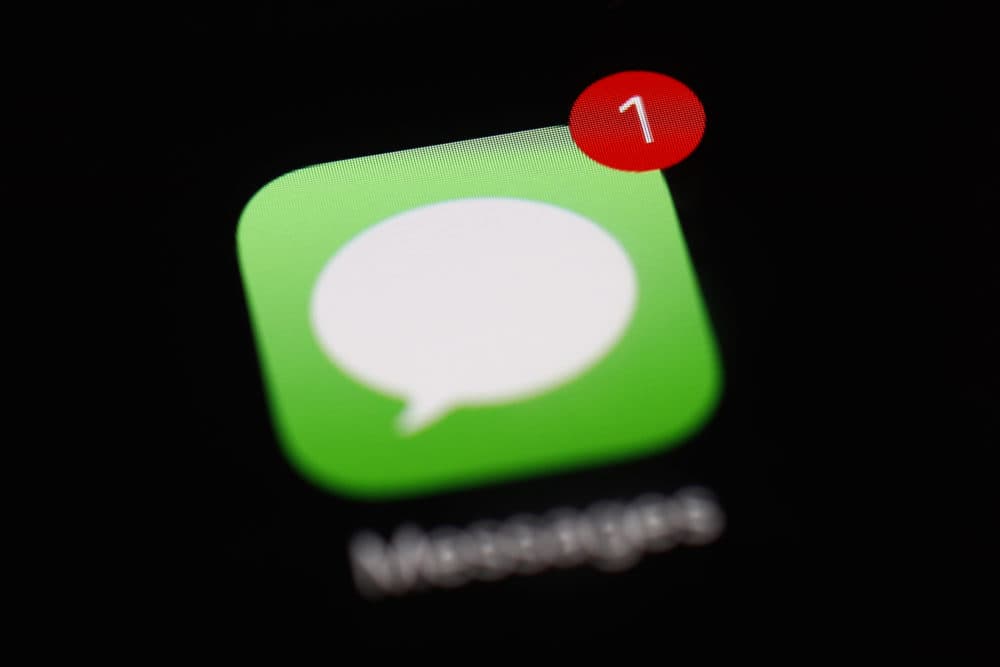Advertisement
Commentary
How Intimate Relationships Can Foster Deadly Cyberbullying

The morning he was set to graduate from Boston College, Alexander Urtula died by suicide. His girlfriend, Inyoung You, was implicated in his death, indicted on charges of involuntary manslaughter. The charges were filed after the discovery of thousands of texts that You sent Urtula in the months before he died — texts encouraging Urtula to kill himself, saying that the world would be better off without him.
Alexander’s experience is not an isolated incident, unfortunately. We are child psychiatrists who’ve seen firsthand the consequences of cyberbullying: Meredith Gansner performs longitudinal research on problematic digital media use in youth with psychiatric illness and Nancy Rappaport has studied school violence in public schools for over 25 years.
Too often, we discover that young people are being cyberbullied after they’ve already become hopeless, depressed or suicidal. In a 2019 study of psychiatrically hospitalized adolescents, 1 in 10 surveyed teenagers were hospitalized specifically because of cyberbullying. (Being cyberbullied also appears to be a unique risk factor for suicide, independent of its co-occurrence with “traditional” in-person bullying.)
Some young people are skeptical about whether cyberbullying is really any different from bullying before the digital age. Discussing the tragedy of Urtula’s death in Dr. Rappaport’s Harvard freshman seminar, one undergraduate said: “… technology doesn’t make people more malicious, it merely provides a place for people to express horrible thoughts.”

Yes, bullying didn’t start with the internet, but it’s also true that digital aggression can be more pernicious than traditional “in-person” bullying. It’s fast, sometimes anonymous and easier to say things that one would never say in person.
Online, bullies can’t see the emotional impact of their insults or threats. Missing their victims’ nonverbal responses, they may be less empathetic and unrelentingly cruel. Cyberbullying can also feel impossible to escape because it can follow its victims into a dorm room or home. While it’s easy enough to advise young people to simply separate themselves from their digital devices, most have never lived in a world without constant digital contact. Teens and young adults are increasingly reliant upon their cellphones — young people between the ages of 18 and 24 send or receive an average of 110 messages per day and 22% consider themselves to be “smartphone-dependent.”
Existing protections against cyberbullying — including anti-bullying policies and specific locations to report abuse (both adopted by social media platforms), and cellphones that have a “block this caller” ability — are predicated on the recognition that online harassment is actually occurring. Experts in digital aggression suggest that acts of cyberbullying are defined by an intent to harm, repetition and an inherent imbalance of power, but these factors are not always obvious. What if a teen or young adult doesn’t realize he is being cyberbullied?
Advertisement
Digital intimate partner violence ... is a sub-type of cyberbullying that may be particularly challenging to recognize as abuse
Digital intimate partner violence, as seen between You and Urtula, is a sub-type of cyberbullying that may be particularly challenging to recognize as abuse. Insulting, humiliating or coercive texts are more easily dismissed and forgotten when interspersed with professions of love and support. A helpful analogy is that of a gambler: The smallest of winnings encourages persistent, self-destructive engagement.
Moreover, intrusive digital texting (e.g. constant texts, asking who someone is with or what they’re doing) can be mistaken for affectionate jealousy, at least initially — a sign of intimacy and connection. And the more intimate a relationship, the more likely it is to rely on texting as the main mode of digital communication. A texting thread has no anti-bullying policy and there are often no witnesses to provide support or an alternative perspective, as there are on social media. The unique ability to continuously monitor, harass and isolate a partner through texting is likely why more than 70% of college students who report dating violence say it happens through cyberaggression.
Because digital dating violence is more likely to occur as young people are becoming autonomous and moving out of the home, it may be harder for families to recognize the warning signs and help them escape from the relationship. (And the more digitally intertwined partners are, the more impossible breaking off the relationship may appear.)
[Urtula's] story serves as a powerful warning of the sometimes-hidden peril of constant digital connection.
A recent college graduate we spoke to warned: “Even if an individual can block someone on their phone, it doesn’t block that person on any other media platforms; you then have to make sure that you go through all of your social media accounts and block them on each one.” It may be easier to minimize and excuse the abusive online behavior, and remain in the relationship.
If family or friends suspect a loved one is the victim of relationship cyberaggression, there are still ways to intervene, even from afar. As psychiatrists, we frequently ask young people to share upsetting texts and explore the context together. We gently aid them in establishing relational boundaries, helping them reflect on realistic expectations for intimacy and digital privacy. Undoubtedly, these conversations take time, which can be agonizing if a loved one is slipping deeper into an increasingly destructive relationship. However, we encourage friends and family to remain patient, stay connected and continue listening and building trust.
Urtula’s death cut short a promising life, but his story serves as a powerful warning of the sometimes-hidden peril of constant digital connection. Although the rapidly changing digital landscape can be intimidating to navigate, and we still await technologies to combat cyberaggression at a higher level, the young people in our lives need us to maintain an open-minded, inquisitive stance. They need to know that they can move away from home — and make romantic mistakes — while trusting that if they do distance themselves from their friends and families, support will never be that far.
Resources: You can reach the National Suicide Prevention Lifeline at 1-800-273-TALK (8255) and the Samaritans Statewide Hotline at 1-877-870-HOPE (4673). The National Domestic Violence Hotline can be reached at 1-800-799-SAFE (7233).

